The DCS (Digital Cinema Society) has released another great episode called “DCS Large Sensor Cinematography”. The section tries to address the benefits, aesthetic and technical differences, as well as the challenges of shooting larger format sensors as compared to Super 35. Does large-format become the new standard? Can S35 be defined as obsolete?
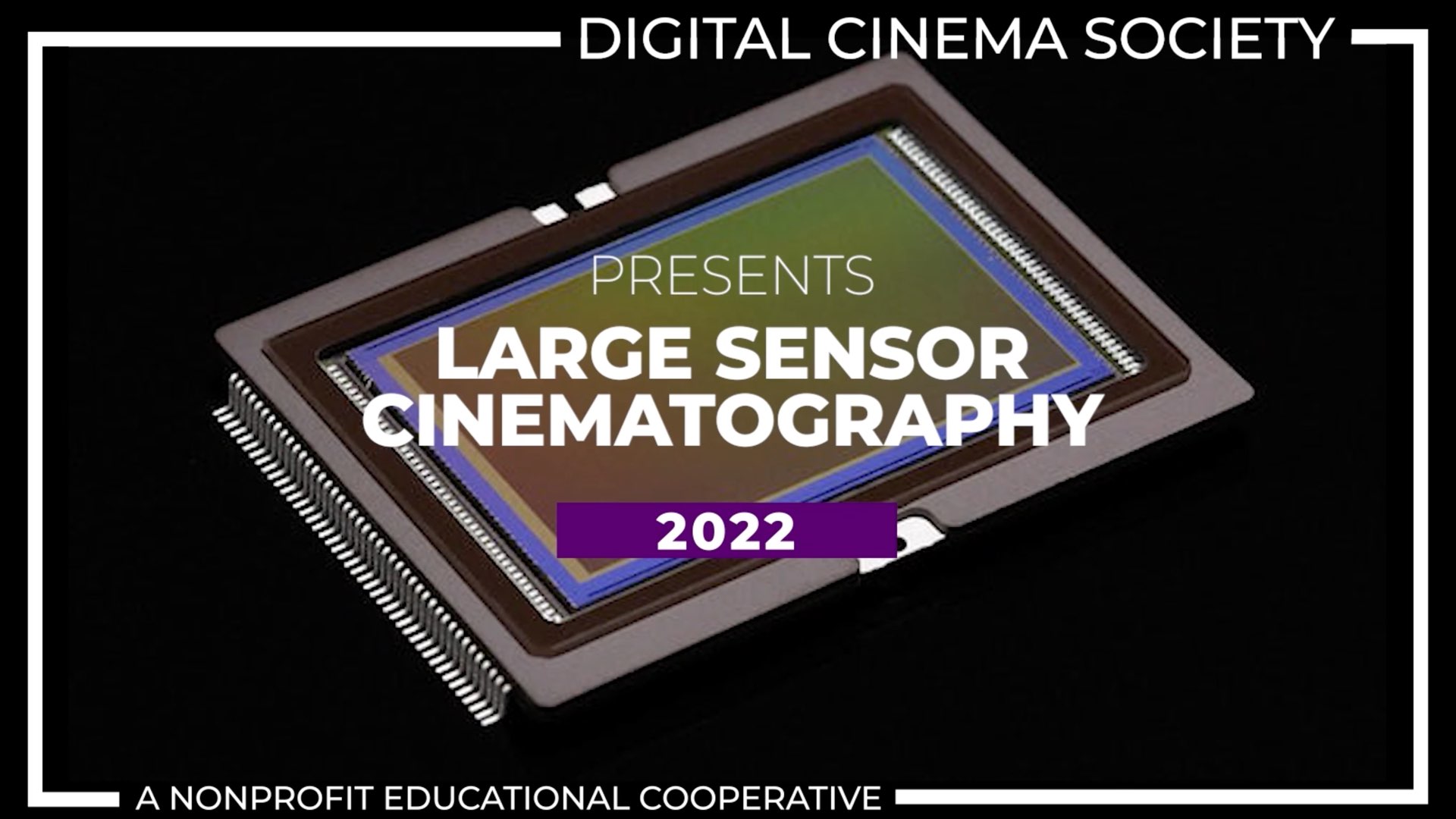
DCS Large Sensor Cinematography discussion
This is the full version of the Digital Cinema Society‘s format-agnostic exploration of Large Sensor Cinematography. The presentation demonstrates the benefits, aesthetic and technical differences, as well as the challenges of shooting larger format sensors as compared to Super 35. It features interviews with renowned cinematographers and industry experts along with behind-the-scenes coverage and sample footage. Listed in order of appearance are Julio Macat, ASC, Tobias Schliessler, ASC, Director Nigel Dick, Nancy Schreiber, ASC, ARRI Lens Specialist Art Adams, Megan Donnelly from Abel Cine, Zeiss’s Snehal Patel, Matthew Duclos of Duclos Lenses, Panavision’s Aaron Kroger, DIT Lewis Rothenberg, Steve Yedlin, ASC, and cinematographer Todd Bell. This program is dedicated to the memory of Douglas Trumbull, the “Godfather of Large Format Cinematography”, as stated by the DCS. Watch it here as the video can not be implemented. The discussion on the video is underneath and contains our own personal opinion.
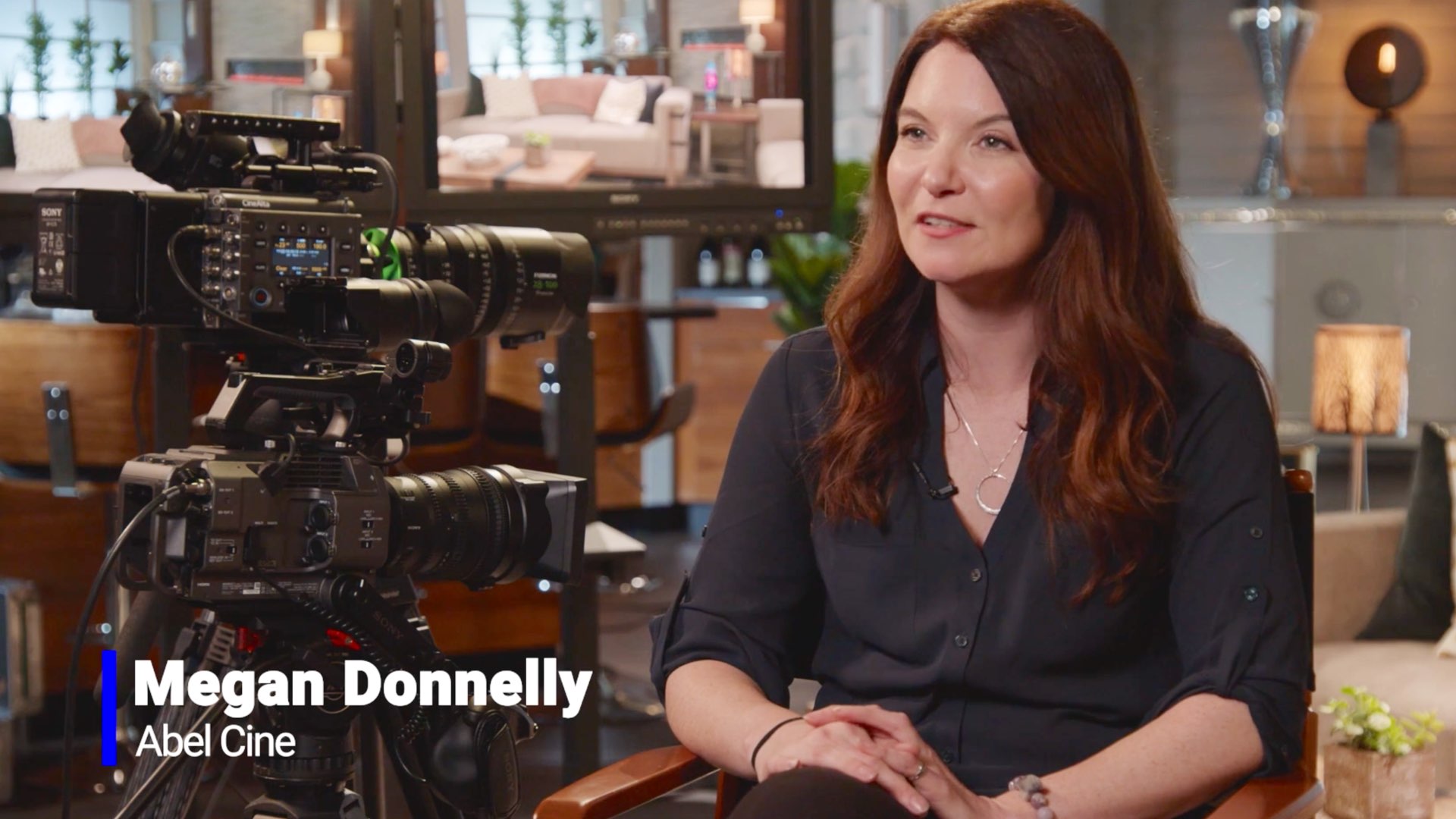
The camera that changed it all was the Canon 5D Mark II, as it allowed to shoot video by using its entire 35mm full-frame sensor. Still photographers transformed overnight into cinematographers.
The strengths of large sensors
There’s no need to introduce the advantages of the large format sensors. The math is pretty simple. Larger real estate will give you larger pixels, more color accuracy, less noise, more resolution, and so on. Of course, there are drawbacks as well. For instance, larger sensors demand more power, better heat management, higher bitrate, and bigger lenses. Optically, large format cameras will allow you to get closer to your subject with higher intimacy with the actors and without getting distorted, as you can use narrower lenses. As opposed to Super 35 that in order to get a larger field of view with the same distance from the subject, you will need to use wider lenses and thus getting your subject distorted. Moreover, the main advantage of large sensors is the shallower depth of field. In fact, this advantage goes X2, as that’s the physical characteristic of larger sensors, plus the optical ability to use narrower glass.
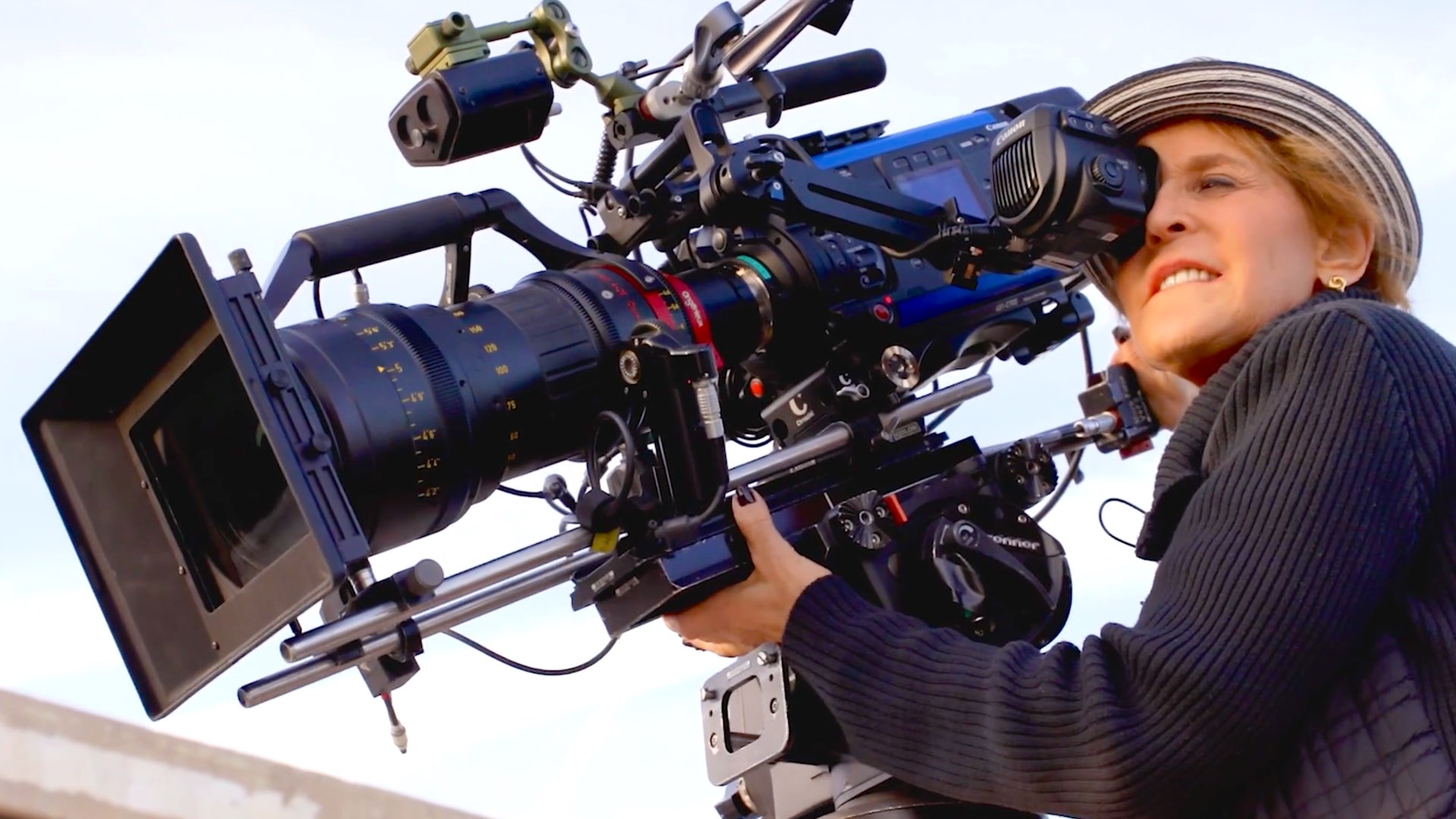
There’s no need to introduce the advantages of the large format sensors. The math is pretty simple. Larger real estate will give you larger pixels, more color accuracy, less noise, more resolution, and so on.
The reasons for shooting on S35?
Back then, many movies were shot on Vista Vision which is equivalent to full-frame. However, in order to facilitate operation and the cost of film stock manufacturing, Super 35mm film was produced, and its popularity has dramatically raised. That’s one of the main reasons that Super 35mm cameras were the most widely used by cinematographers. Hence, the audiences have got used to the S35 look. That allowed to save costs on film stocks, and make cinema cameras more compact. Extreme sizes like 65mm were utilized in special production (IMAX). However, the born of digital cameras change all that.
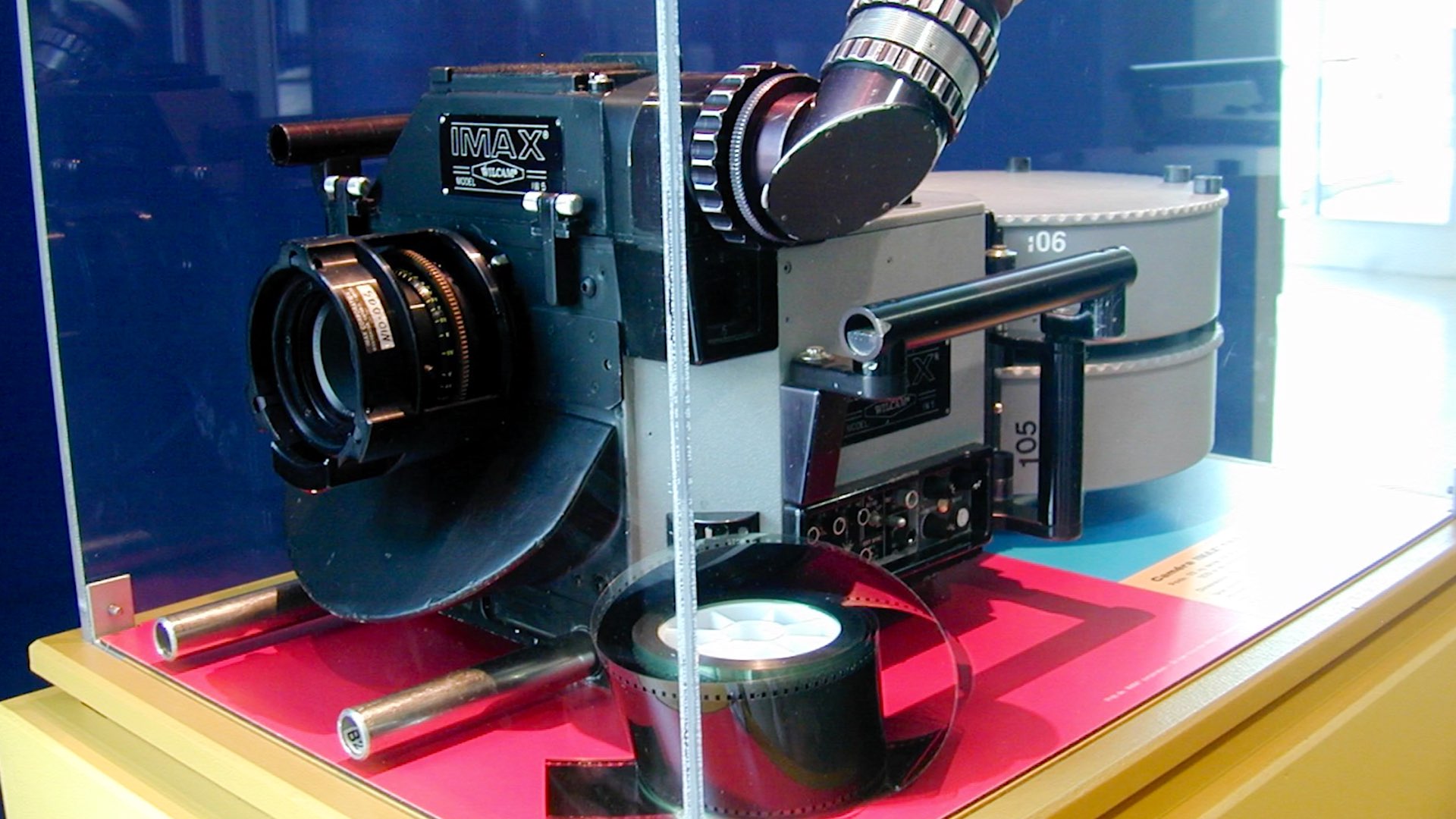
In order to facilitate operation and the cost of film stock manufacturing, Super 35mm film was produced, and its popularity has dramatically raised.
Canon 5D Mark II: The turning point
The camera that changed it all was the Canon 5D Mark II, as it allowed to shoot video by using its entire 35mm full-frame sensor. Still photographers transformed overnight into cinematographers, by utilizing the video capabilities of the large sensor to create the shallow depth of field, which was (and still is) a synonym for cinematic imagery. As Canon paved the way, Sony took it further with its Alpha line. Since then, the definition “Large Format” was well established among videographers, cinematographers, and visual content creators. For instance, explore the slide below which shows the ratio of large format cameras vs. S35 regarding Oscars 2020 and Oscars 2021. Notice that the segment of the large format was dramatically expanded.
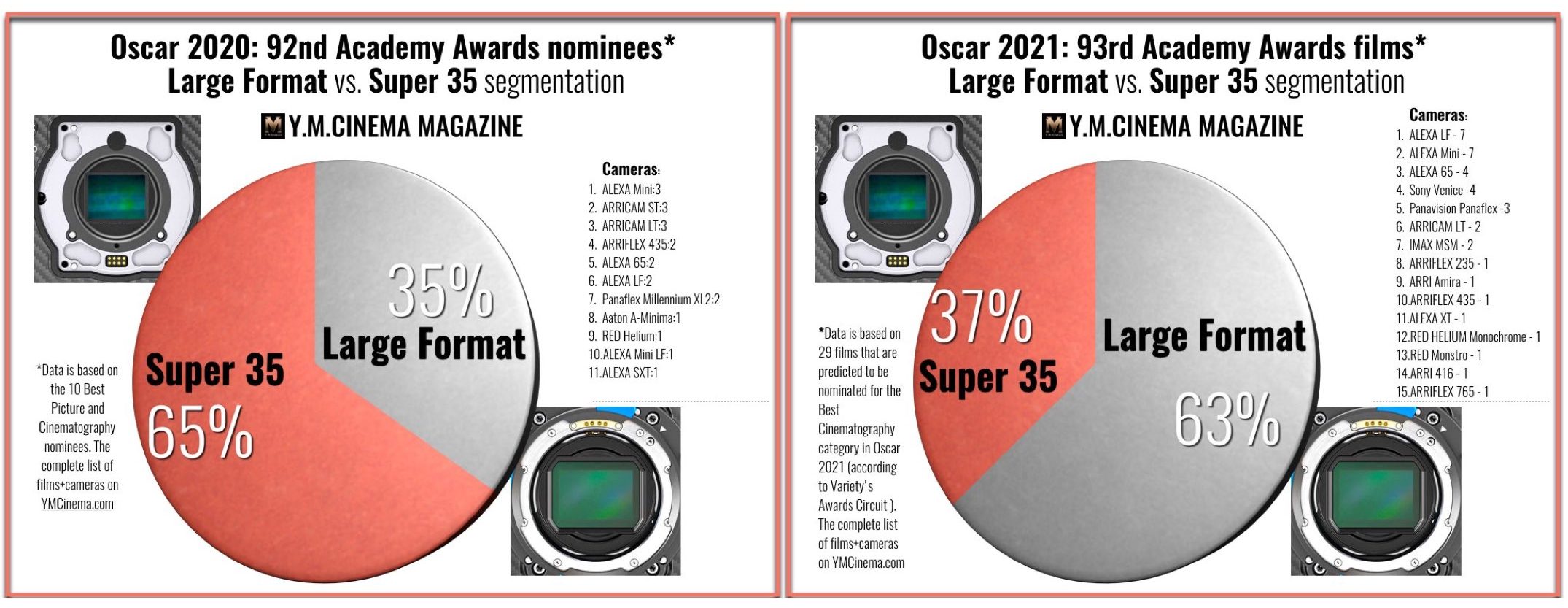
ARRI is making a brave move with its anticipated S35 4K camera, as ARRI stated before that it strongly believes in the Super 35 format.
Super 35: An obsolete format?
It seems that cinematographers have been praising the ‘Look & Feel’ of the large format. Furthermore, camera manufacturers are releasing mainly large format cameras. For instance, almost all new cameras released recently incorporate large sensors (RED Raptor, Canon R3, Canon R5 C, Nikon Z9, Kinefinity MAVO Edge, Sony VENICE 2, Panasonic LUMIX BS1H) whereas only two cameras that were released recently own Super 35 and MFT sensors (RED Komodo and Panasonic LUMIX GH6 accordantly). We definitely see a significant tendency toward larger sensors, especially in the high-end market. Nevertheless, ARRI is making a brave move with its anticipated S35 4K camera, as ARRI stated before that it strongly believes in the Super 35 format, which still is supposed to remain popular in broadcasting. However cinematography-wise, filmmakers need a super solid excuse to use Super 35 for the big screen. Unless you want to shoot on film. For instance, the ARRIFLEX Super 35mm film cameras are being extensively used when a pure celluloid look is desired. Bt besides that, the majority of high-end cinematographers prefer to shoot in large format.
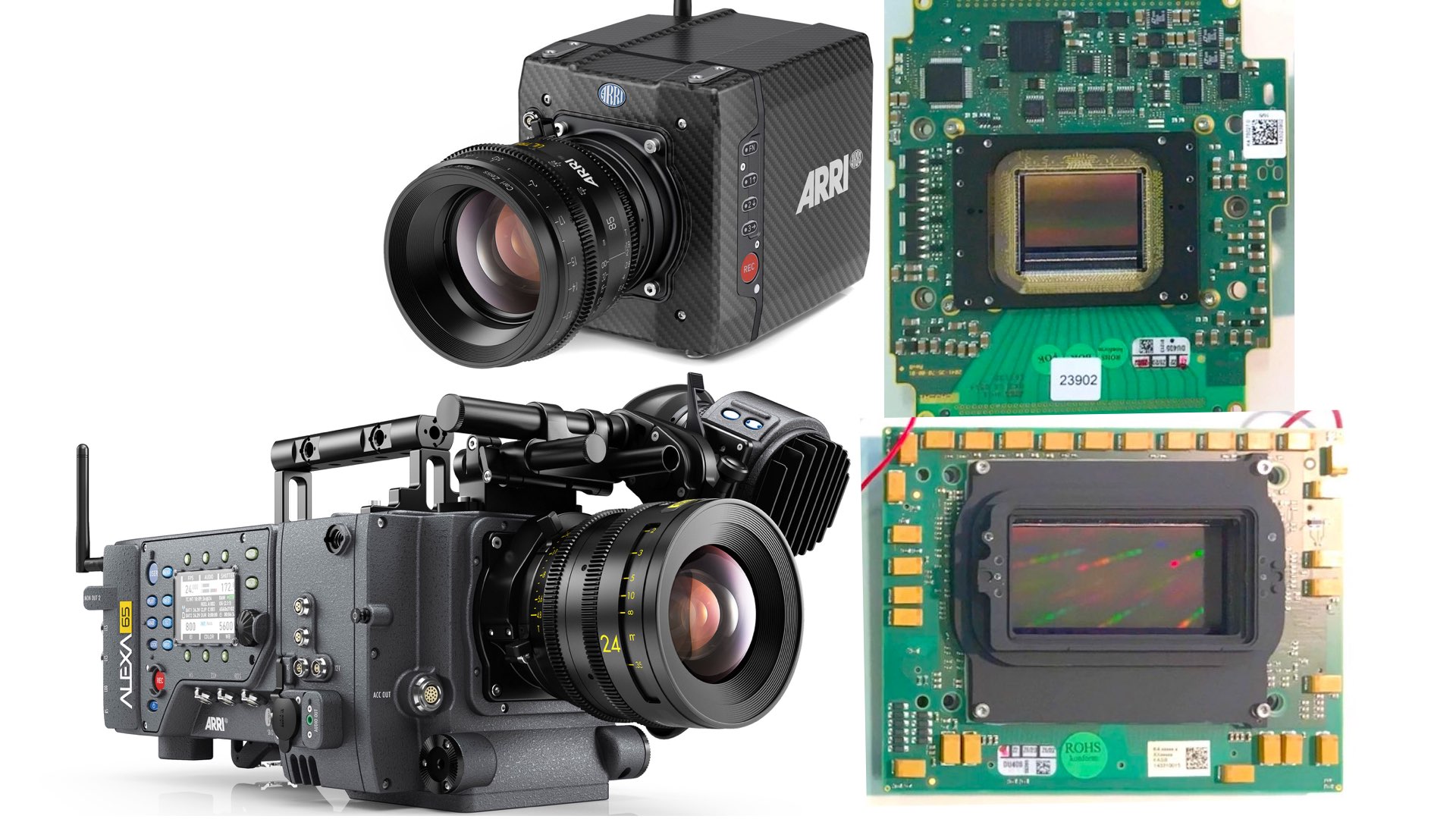
Camera manufacturers are releasing mainly large format cameras. For instance, almost all new cameras released recently incorporate large sensors (RED Raptor, Canon R3, Canon R5 C, Nikon Z9, Kinefinity MAVO Edge, Sony VENICE 2, Panasonic LUMIX BS1H).
So what’s next?
Let’s try to predict the future. Canon, Nikon, Sony, and Panasonic will continue to manufacture full-frame cameras and even medium format cameras. Canon will focus on large sensors and beyond with its Cinema EOS. Sony will sharpen the Alpha line by utilizing its medium format sensors that are implemented on Hasselblad cameras. RED Digital Cinema will focus its DSMC3 on Vista Vision sensors, and there’s a chance (we believe so) that there will be a newer version of the Komodo with a full-frame sensor (also global shutter?). However, ARRI will try to bring Super 35 to the front again, by playing the conservative way with its upcoming ALEXA S35 4K camera, which will definitely produce stunning imagery. But between the lines, we can say carefully that Super 35 starts to become an obsolete format. Do you agree?
Update (4/4/2022): For the knowledge completion and further discussion, read this article: “Large Format Look”: There’s No Such Thing!

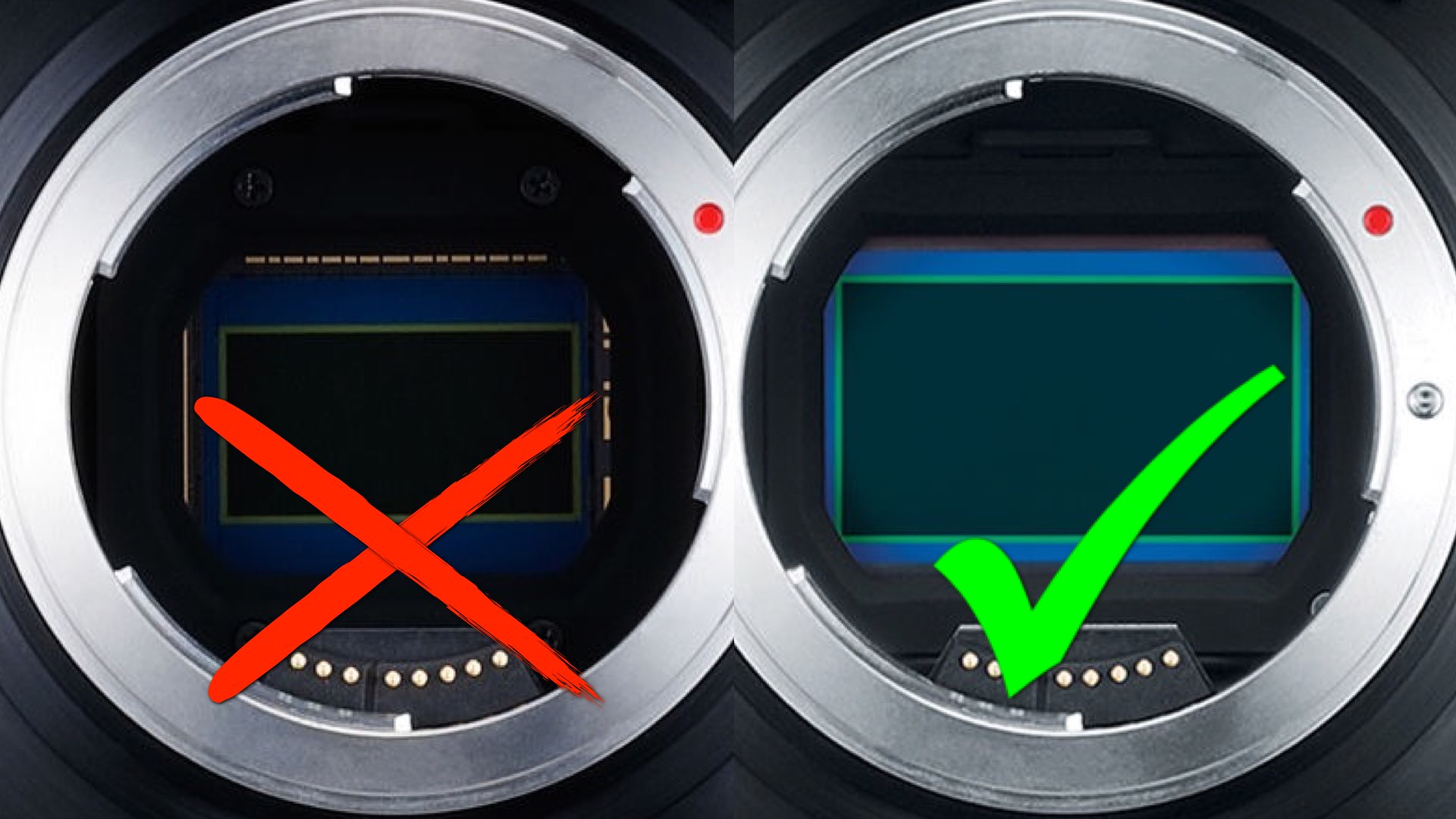

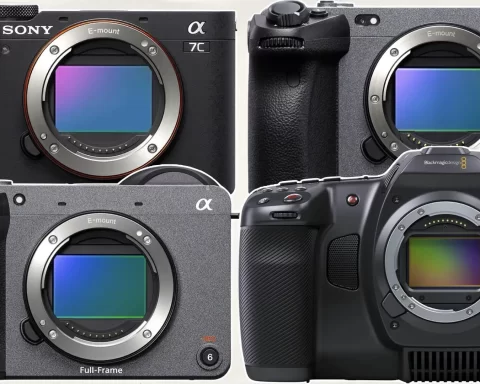
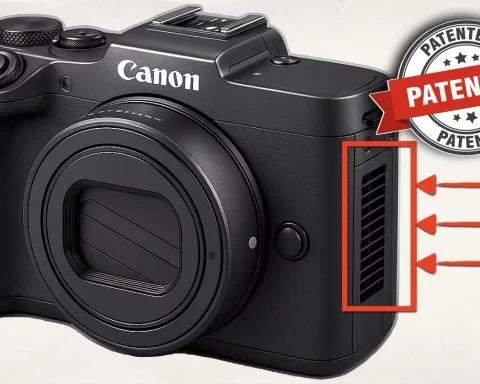

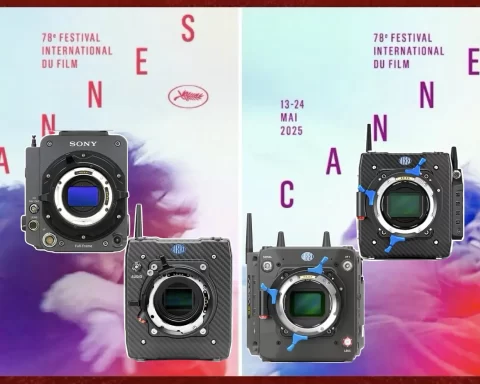
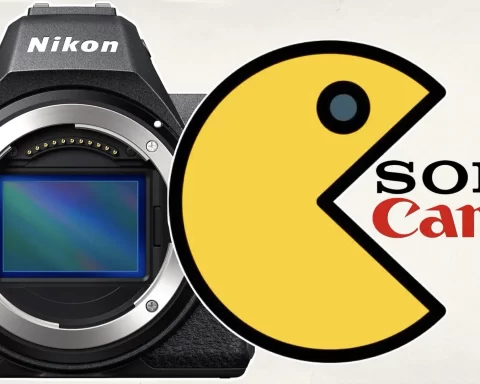
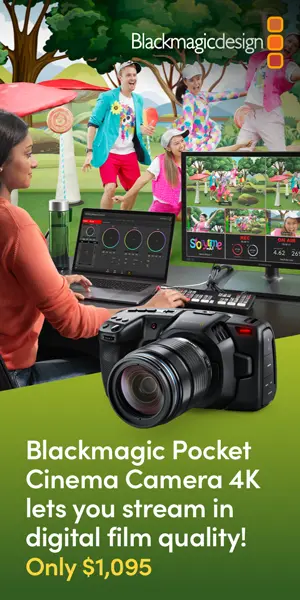
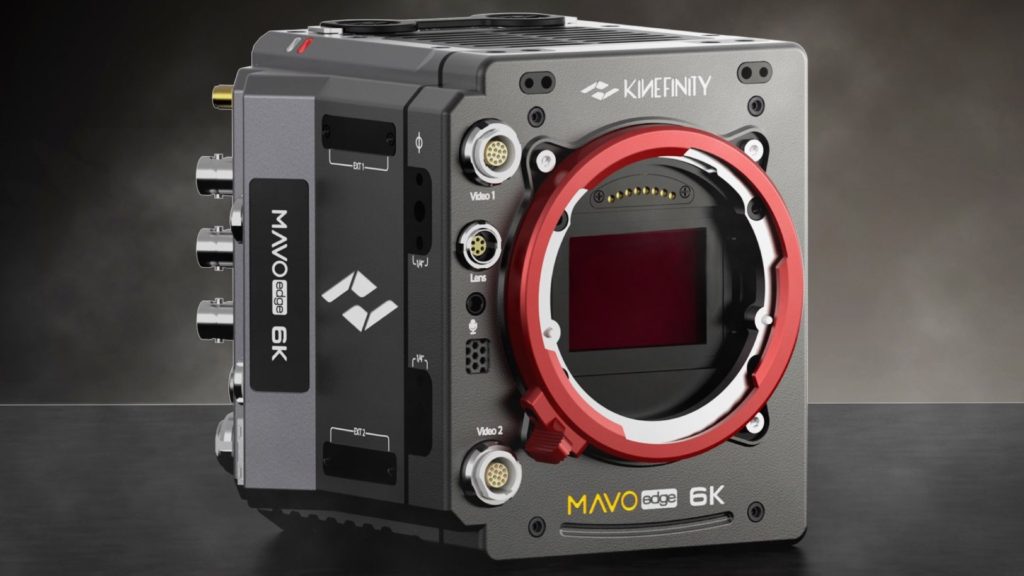
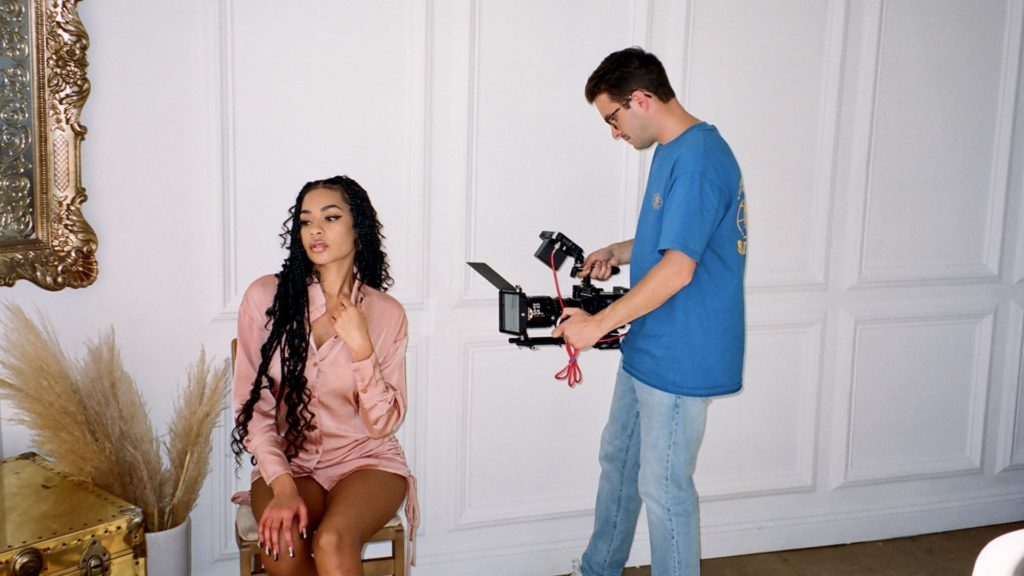
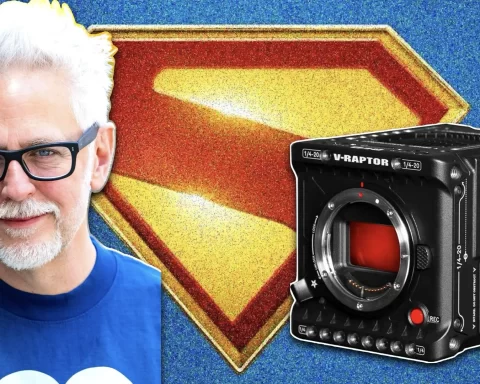
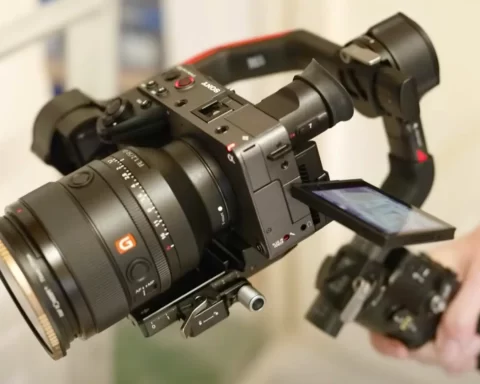
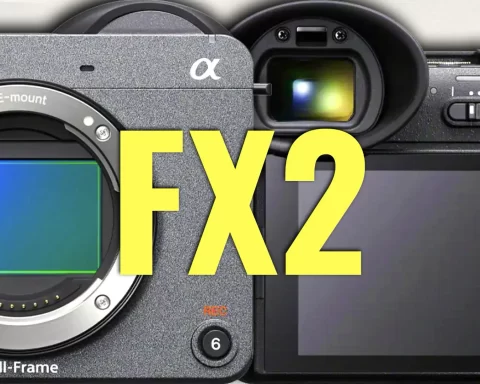
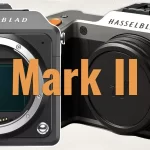
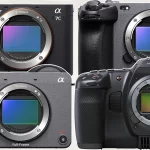
S35 is not going away, just like 2/3″ is not going away. Think about the lens focal lengths you would need in full frame to match the focal lengths with the smaller formats. It’s size and weight prohibitive, especially for hand held work.
Try to educate yourself before saying such rubbish. That video is so full of incorrect fluff it’s beyond belief.
Please elaborate. Top specialists and experts are quoted in this video.
Well, the fact they stated “whereas only two cameras that were released recently own Super 35 and MFT sensors (RED Komodo and Panasonic LUMIX GH6 accordantly).” Ignoring the OM-1 from OM Solutions and the Blackmagic Studio Camera 4K Plus, and Blackmagic Studio Camera 4K Pro from Black magic Design.
As I see, the main problem to move toward LF is an variety of cinematic optics for S35 that doesn’t cover LF sensors. Ultra Primes and Compact Primes of Zeiss is just one example. It means, the next step of spending money on the film gear is total new optics sets. Rehousing of lenses for photography mostly leave the ‘breathing’ effect of focus pulling…
So moving to a larger fornat doesn’t always actually offer a larger pixel size, better colour accuracy etc. Think of the Alexa LF, it’s just the same sensor as the alexa mini just flipped on the side and doubled.
I personally believe in the asthetics of s35, i know it’s not for everyone but i prefer it and find that larger fornats ‘flatten the frame’ too much for me.
That doesn’t mean to say that I don’t think large format has a place, but I think like anything else it’s a certain tool and sometimes s35 will have a place but so wil s16 and so will lf. I think that it’s naive to think that s35 is a ‘dead format’ somehow, I just don’t see that happening inside the industry at the moment.
Steve Yedlin says it all in 2mins 38s starting at 19:50 and everyone contradicting his statement necessarily has to be wrong because you don’t want to argue about physics in the realm of cinematography and especially not with Yedlin. The tribute to Trumbull is nice but misleading, the frame rate was his speciality in Showscan, as so many films had been shot in 65mm before.
Cinema only really profits from large format because high end camera and lens manufacturers (Arri, Cooke, Angenieux…) live in golden times now and will therefore prosper for a while longer (but most of their products are so horrendously expensive they will only be used by small numbers of cinematographers). On the other hand, the financial damage to owners of expensive S35mm gear caused by the full frame craze must be grave. Remember, just a few years ago 2/3 B4 HD lenses were basically rendered worthless in a few years. But, I am still waiting for the Arri Mini to be available for under 10K. Waiting, waiting, waiting…
I find it rather weird when people talk about oh so wonderful small depth of field when the most beautiful and influential cinematography these days probably is Lubezki´s wide angle and deep focus look, and – see Yedlin – a 25mm at F2 on S35 will give the same image as a 35mm at F2.8 on FF if from the same lens line.
Only S35 offers the option to use small but great B4 zoom lenses adapted, something which I will rely on for documentaries until I quit filmmaking.
Most of the times when I especially like the look of an image it turns out to have been shot on an Alexa Mini.
The reality though as that many independent cinematographers are thinking in their own microcosm. Only a small number of indie cinematographers will be using these new lenses.
However ost big budget studios like Disney, Warner, Universal, or even Amazon & Netflix don’t bat an eye for camera/lens rental cost. That’s the least of their budget. It cost around $2500-$3000 a week to rent the Alexa LF. A nice set of primes can cost around the same (or slightly more). If they go the zoom route, an Angenieux Optimo zoom can run around 700 a week (all of these prices are average quotes). Couple that with other equipment – and even adding a B-cam, the bundles will probably run $10,000 week. The average camera equipment cost for a film shoot (pro level – standard 2 month shoot) is around $80,000 – $100,000.
That’s nothing compared to set building,CGI, cast and crew salary, etc. Its very small in comparison to other line items.
Vistavision is not the original movie format. Movie / academy 35mm was the original movie format with an 4:3 aspect ration. Than when TV came in the 50’s, the Hollywood studio bosses where afraid people wouldnt go to cinemas anymore. They invented widescreen. Vistavision is one of the many formats they came from this area.